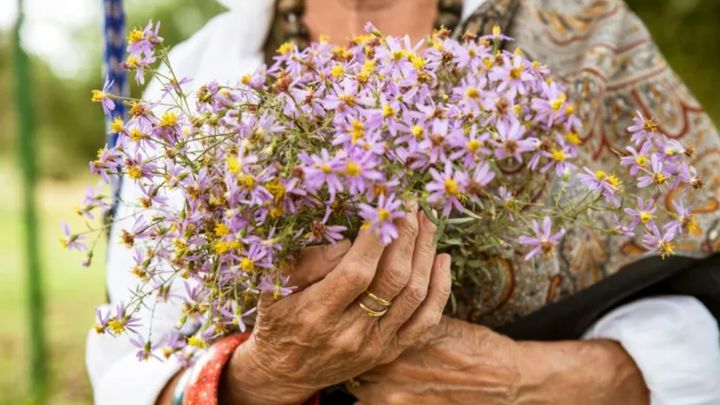
Fruits ripen. Leaves turn, but can be reused for mulch; some may dig up their last crop of spuds before slugs have a chance to attack.
But this autumn bounty is not free. With it comes a swell of unwelcome guests, like snails, the aforementioned slugs, and summer-fattened, grumpy wasps.
Usually, anyway. But if you’ve noticed a significantly lower stinging population than you’re used to at this time of year, it’s not just in your head.
“The numbers are so low it’s unbelievable,” James Tennent, who owns pest removal company EraserJet, told the BBC.
He’s seen call-outs for wasp nests shrink from 60 in June of last year to 10 this July.
What’s going on?
Spring weather really affects wasp populations, and we all know that this year’s was a washout.
“The science tells us that cold, wet springs mean that foundresses – the big queen wasps that start appearing in spring – struggle to successfully grow a nest,” Professor Seirian Sumner, an entomologist at the University College London, told The Guardian.
“This is because they are solitary at this time in the colony cycle and so need to do all the nest building, egg laying, prey hunting all by themselves.”
Rain, cold, and a subsequent lack of critters for them to eat means few nests survived then, so fewer still are thriving now.
And if that sounds suspiciously like good news to you, conservation charity Buglife told the BBC that it’s only glad tidings to those who hate plants; “A loss of wasps will impact us in a number of ways,” they said.
“It leads to reduced pollination, and without wasps our plants are more likely to be eaten by insect larvae otherwise controlled by wasps.”
“Without wasps, the world could be overrun with spiders and insects,” The Natural History Museum adds.
What’s that got to do with me watching my lawn?
The UK Pollinator Monitoring Scheme (PoMS) is asking people to record any insects they see in their flower patch during ten-minute intervals ― that includes wasps.
The more data we have on them (they’re studied way more rarely than bees), the better. PoMS prefers data from flower patches containing 14 species, concluding blackberry, ivy, thistle, and levender.
“Every single count helps make our data more meaningful, and if you can carry out several counts at one location during that time you will be adding extra value to your survey records,” PoMS’ site reads. You have until the 30th of September to submit your results.
Meanwhile, you can “Hang out your trap any time before Saturday 7th Sept to take part” in The Big Wasp Survey.